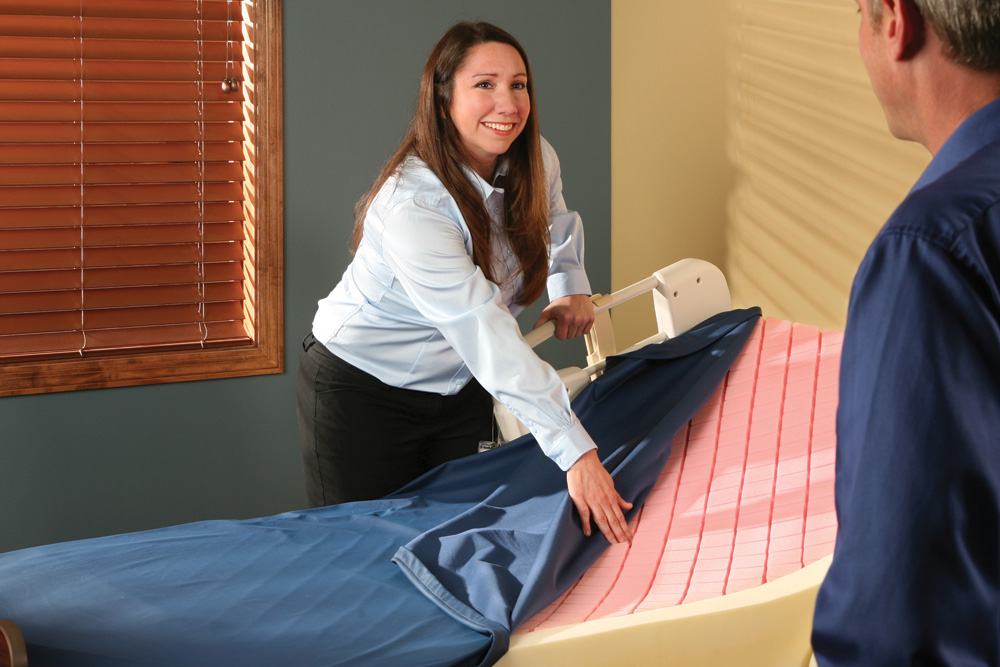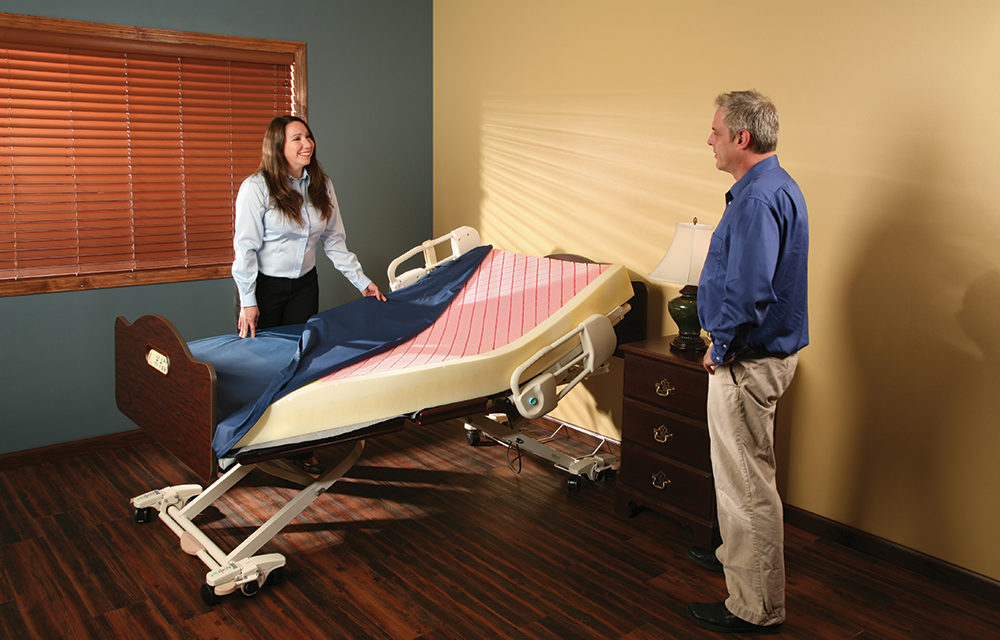As an industry standard, healthcare foam mattresses can be found in millions of patient rooms around the world. Because of their popularity, many different brands and manufacturers have produced their own variation on this classic mattress with subtle yet significant differences. While weight capacity and warranty are important factors, they do not necessarily indicate quality or longevity. The following are some of the key questions and considerations you should keep in mind as you select sleep surfaces for your residents.
How well is the foam mattress constructed?
Many foam mattresses are made up of a variety of foams adhered together in a way that diversifies the levels of immersion for maximum clinical benefit. For example, there is often a firmer middle section to support the torso, a softer heel section to cradle the feet and a raised perimeter to help protect from falls.
Conducting a hands-on quality check is often the best way to ensure satisfactory construction. Is there a stiff layer of glue between the layers? Are you able to easily separate the various sections of foam? Is the seam between the layers flawed? If you answered “yes” to any of these questions, you might not want to invest in that particular mattress.
How firm should the healthcare mattress be?
Predicting patient preferences can be challenging – finding a popular, crowd-pleasing mattress is often the way to go. Many people judge a mattress’s comfort in relation to their preferred sleeping position – by using medium firmness mattresses, you’ll find a happy middle ground for most patients. Side sleepers will enjoy the feeling of softness while stomach and back sleepers will detect the firmness they prefer.

What kind of mattress cover should I use?
The purpose of a mattress cover is to protect the mattress while allowing it to provide comfort and pressure redistribution to the patient. Most mattresses have a non-stretch, 2-way or 4-way cover.
A non-stretch cover generally offers the most moisture resistance, but often creates a warm sleep surface. 2- or 4-way stretch covers help by cooling the sleep surface and allow for better immersion and envelopment, but the more stretch a cover has, the less moisture resistant it is.
Regardless of stretch, a proper fit is of the utmost importance. A cover that is too tight will prevent immersion and make the surface less comfortable, while loose fabric can create uncomfortable pressure in the wrinkles and folds.
What additional benefits should I look for?
It is not always possible to have a variety of mattresses on hand to address specific clinical issues that arise – look for mattresses that offer a variety of built-in options like raised perimeters and heel slopes in addition to a cover that provides airflow. By purchasing a mattress that includes all these considerations you’re more likely to have your bases covered if an additional health issue arises for one of your patients. However, since many of these features must be included at the time of purchase, it is always best to assess each patient’s specific needs before deciding on a mattress.
No two people’s needs or preferences are going to be identical, making mattress selection an incredibly important, and at times, difficult task. Direct Supply has compiled some helpful resources to take the stress out of these decisions.
Refer to our Mattress Selection Guide for an overview of our offering, or try out our interactive Panacea Mattress Selection Tool to find the perfect Panacea mattress for your unique needs.
In the meantime, feel free to browse through our vast selection of foam mattresses to get an idea of your options, or contact us for additional help!




